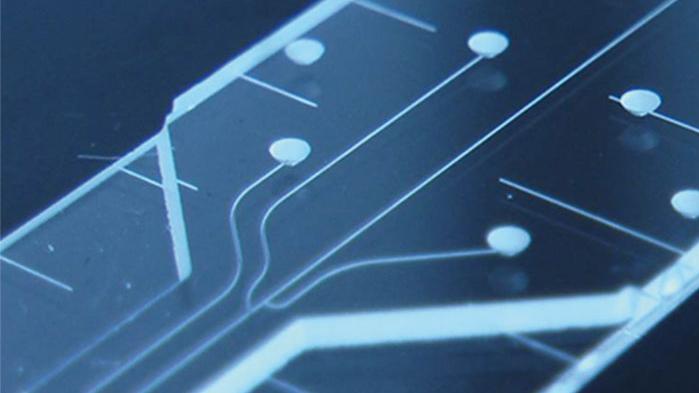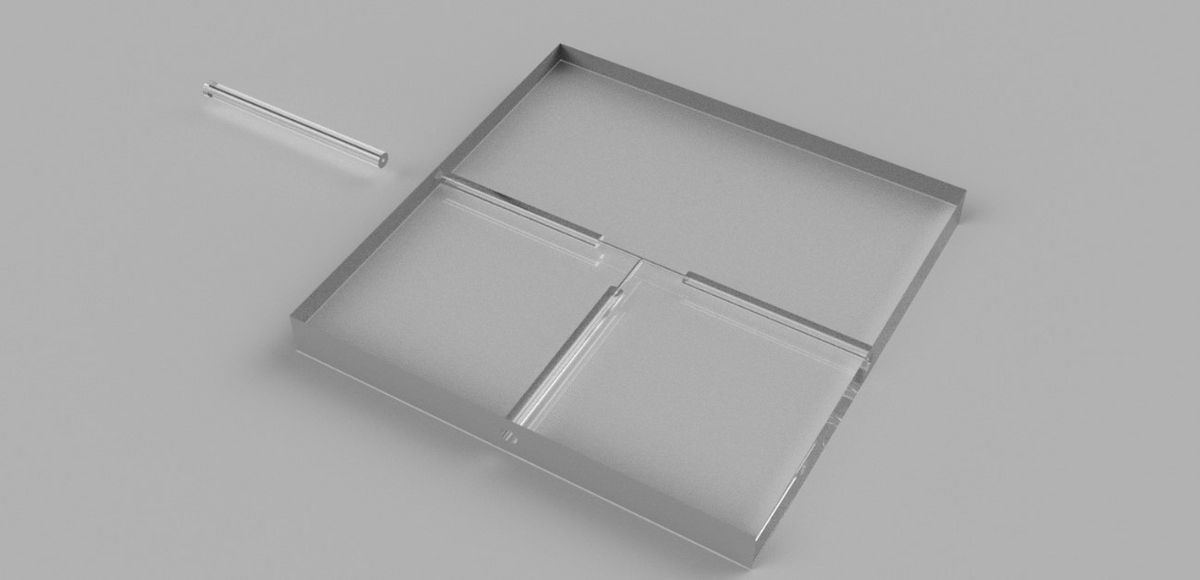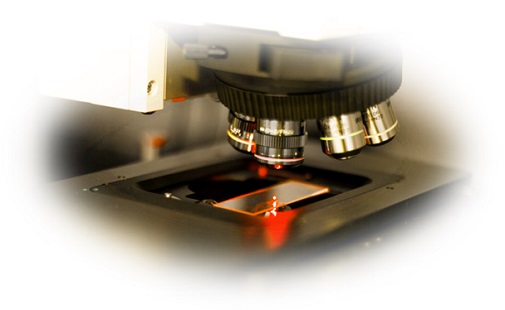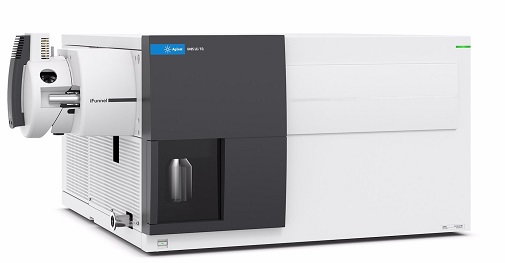The Belder Group's research focuses on lab-on-a-chip technology as a fundamental science in chemistry. A broad field of research and application of lab-on-a-chip technology is carried out in the Belder laboratories at the University of Leipzig. The Belder group is known for miniaturized separation techniques such as chip electrophoresis and chip HPLC.
The Belder Group is known for miniaturized separation techniques such as chip electrophoresis and chip HPLC. The Belder lab also works on detection techniques such as coupling microfluidic chips with mass spectrometry or ion mobility spectrometry, and optical techniques such as fluorescence and Raman microscopy. A particular focus in recent years has been on integrated chip laboratories, which combine chemical reactors and analysis units on a single chip.
Our research topics
In the research area of modular microfluidic systems, monolithic components are fabricated from fused-silica glass using selective laser-induced etching (SLE). SLE technology provides access to unique three-dimensional structures that are not possible with conventional photolithographic methods. The individual monolithic chip components are individually combined into application-specific microfluidic systems and used in cutting-edge research projects such as segmented flow reaction monitoring and miniaturized HPLC separation technology.
Supervising PhD student(s)
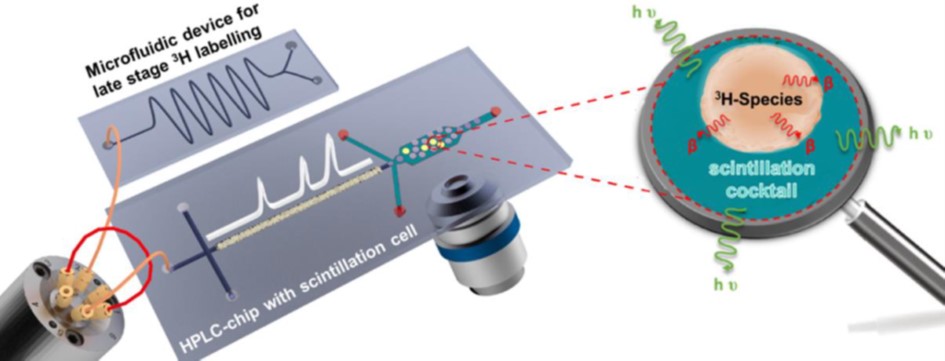
Tritium refers to the naturally occurring radioactive isotope of hydrogen. Due to the low energy of the electron produced during β-decay and the comparatively short half-life, tritium is used as a preferred labeling substance.
Within the framework of the Research Training Group GRK 2721 "Hydrogen Isotopes 123H" (Project ID 443871192), funded by the German Research Foundation (DFG), the miniaturization of scintillation measurement for the detection of tritium compounds is investigated. The main goals are to reduce the use of radioactive substances and toxic scintillation fluids, to handle them safely, and to couple them to microreactors and chip HPLC systems.
Supervising PhD student(s)

In this project, the coupling of miniaturized chip systems with ion mobility spectrometry (IMS) is developed. The low instrumental complexity of such IMS devices leads to compact, robust and fast detection, which even allows discrimination between isobars. The current focus is on the combination with upstream on-chip separation techniques to enable two-dimensional separations of samples in the seconds to minutes range. In addition, IMS is being investigated for detection of ultra-fast droplet microfluidics.
Supervising PhD student(s)

This project deals with the microfluidic generation of double emulsion droplets ("emulsion of an emulsion" or "a droplet within a droplet"). Double emulsion droplets are emulsion systems consisting of three immiscible liquid phases (usually oils and water) whose interfaces are stabilized by surfactants. We want to use double emulsion droplets as small reaction compartments to study reactions at the oil-water interface (e.g., complexation reactions or enzyme-catalyzed reactions). In addition, we intend to couple the double emulsion droplets with ESI mass spectrometry as the detection technique of choice to monitor the reaction outcome.
Supervising PhD Student(s)
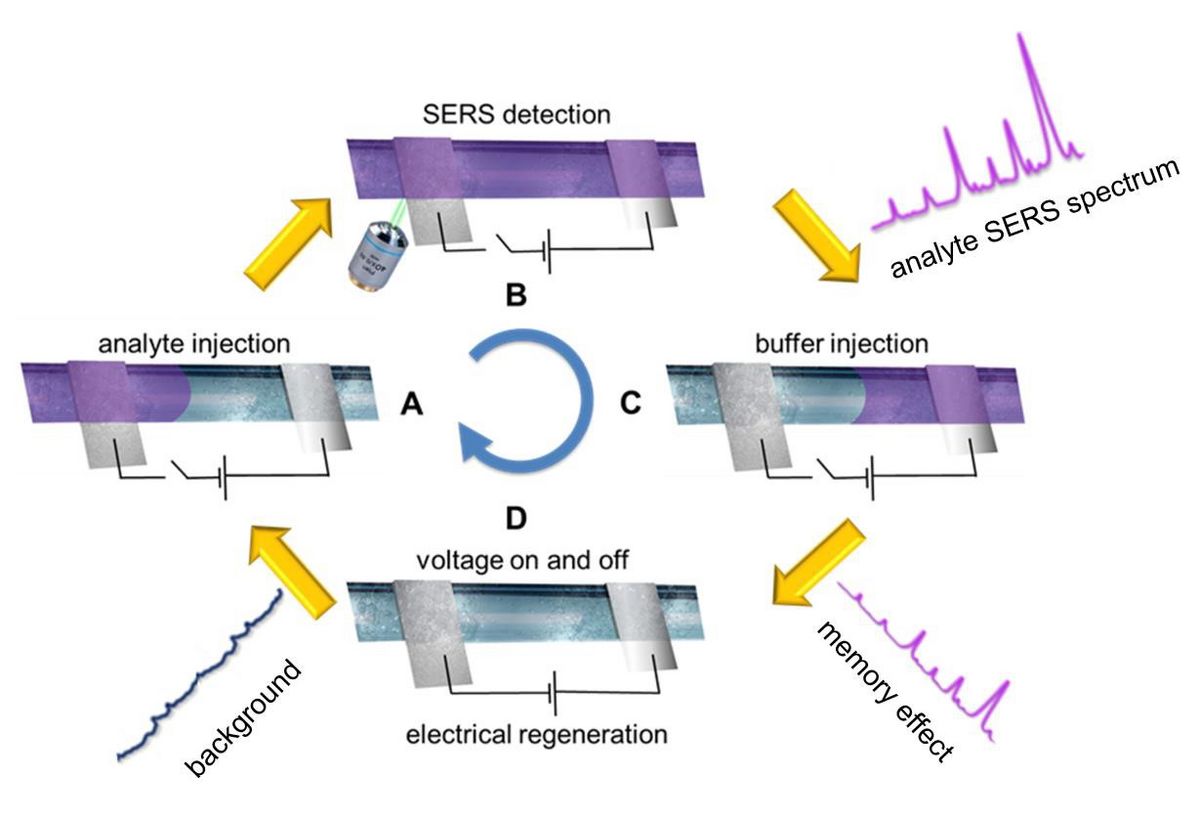
Compared to classical Raman spectroscopy, surface enhanced Raman spectroscopy (SERS) allows signal intensities that are increased by a factor of up to 109, which enables the non-destructive detection of single molecules. Often, nanostructured surfaces can only be used once, because adsorption effects interfere with the detection of subsequent analytes. We have succeeded in making the commonly used silver and gold surfaces usable again by electrical contacting, which should enable the integration of surface-enhanced Raman spectroscopy into on-line techniques such as HPLC.
Supervising PhD Student(s)
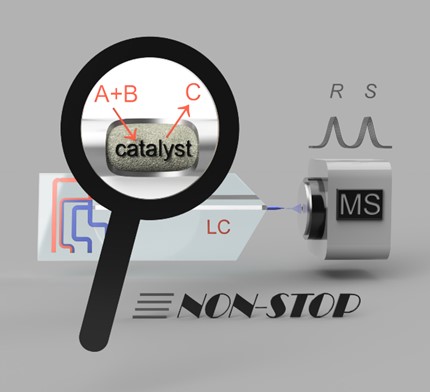
In this project, microreactors are used to study heterogeneously catalyzed synthesis processes in flow-through. For characterization, the particle-packed reactors used for this purpose are directly coupled with (chip)-HPLC-MS and controlled via fluidic circuits. Such integrated systems offer various possibilities for automation, throughput increase as well as reactor control and can thus be used for a resource-saving screening of optimal catalyst and reaction conditions.
Supervising PhD Student(s)
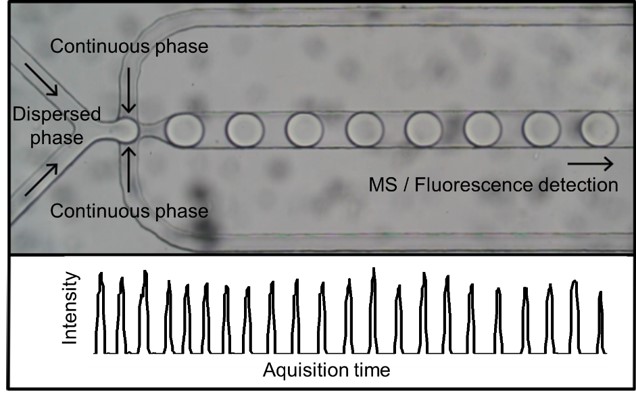
In this topic area, immiscible phases are brought together in a microfluidic channel to form droplets on the pico- to nanolitre scale. These can be used as the smallest reaction vessels for chemical and biochemical transformations and can be freely manipulated. Using Raman spectroscopy, fluorescence spectroscopy as well as mass spectrometry as analytical tools, individual catalytic species can be observed and characterized.
Supervising PhD Student(s)
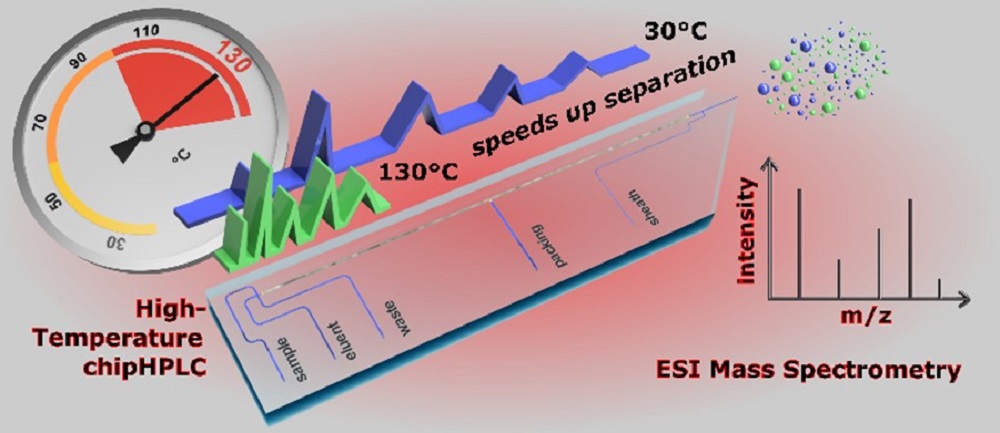
In addition to the miniaturization of conventional HPLC systems, the use of strongly heated and supercritical fluids is a promising approach to improve the performance of chip-based chromatography.
Current technical challenges include the controlled cooling of heated fluids or the controlled decompression of supercritical fluids in the post-column region. Solving these challenges can help to couple high temperature chipHPLC and chipSFC to a high performance mass spectrometric detector.
Supervising PhD Student(s)
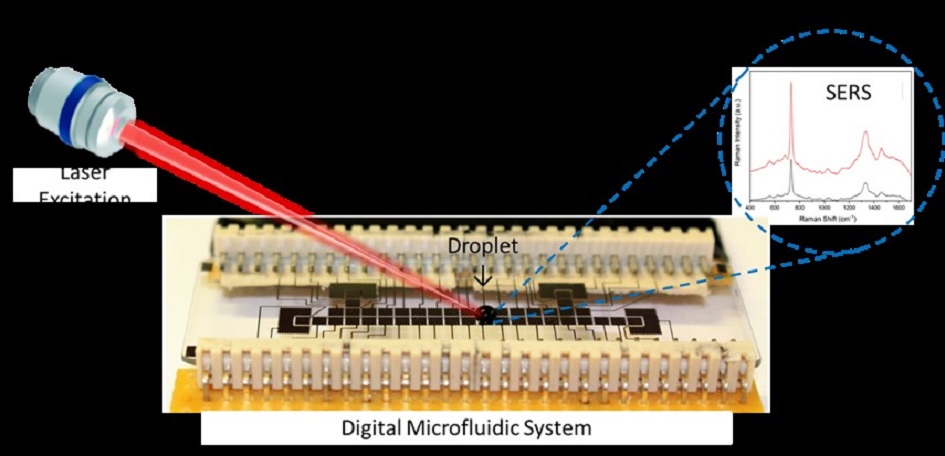
The focus of this research is on the development and automation of lab-on-a-chip technologies for analytical chemistry applications. This is achieved through a relatively new paradigm of microfluidics, digital microfluidics (DMF). A DMF chip contains arrays of patterned metal electrodes fabricated by PVD, photolithography, and wet chemical etching. This allows discrete droplets ranging in size from nano- to microliters to be moved, e.g., dispersed, transported, divided, and combined, by selectively applying electrical potentials to the individual electrodes. This enables automated execution of chemical syntheses and monitoring of the reaction progress by coupling with various detection methods such as surface-enhanced Raman spectroscopy or mass spectroscopy monitoring.
Supervising PhD Student(s)
Third-party funded large-scale equipment since 2018
Thanks to an infrastructure measure funded by the Free State of Saxony, a novel tuneable quantum cascade laser IR microscope will be made available to the Belder working group in 2021. The use of this QCL-IR microscope is expected to enable for the first time IR-based label-free, real-time chemical imaging of dynamic processes in microfluidic IR-transparent microfluidic chips.
Aims of the project
Current scientific activities include the microfluidic chip / QCL-IR microscope setup as well as microsynthetic research for the first label-free, real-time IR tracking of chemical processes in chip-based microsystems. For this purpose, organocatalytic model reactions from the research group FOR 2177 are initially investigated, supported by our coorperation partners from the synthetic chemistry working groups. Among the most important aspects of this research are the development of chip designs such as microflow reactors and the 3D microfabrication of the corresponding chips in IR-transparent materials using SLE technology. This synergistic interplay of the two cutting-edge technologies SLE and quantum cascade laser IR microscopy is currently unique, opening up completely new possibilities and, in the long term, a significant innovation boost for basic research in micro-chemistry.
As part of an ERDF infrastructure measure, the instrumental infrastructure of the university will be strengthened and the AK Belder will be enabled to use a high-speed triple quadrupole mass spectrometer. This instrument can detect multiple target analytes over a wide range of masses and concentrations with unsurpassed speed and sensitivity. Triple quadrupole mass spectrometry is therefore the undisputed method of choice today in application fields where high speed and excellent detection limits are equally decisive criteria.
Aims of the project
With the financed instrumental upgrade, an ideal basic technical prerequisite has been created to perform mass spectrometric analyses in microsystems with previously unattained sensitivity and speed. Thus, multiple target analytes will now be detected and analyzed simultaneously with unsurpassed speed and sensitivity. The use of the funded instrument in combination with the microlaboratories developed to date now offers the possibility of a real breakthrough for research in the field of single-cell and single-particle catalysis as well as ultrafast chip chromatography.
Within the scope of this ERDF infrastructure measure, a novel 3D laser structuring system based on the selective laser etching (SLE) process is being established. This is a hybrid technique consisting of pre-structuring by an ultrashort pulse laser, in which the layout designed in CAD is transferred to the glass substrate. The laser-treated material has a significantly increased etch rate, so that etching (e.g. with KOH) is favored at these points. This makes it possible to produce complex 3D structures in glass, as shown in the following figure.
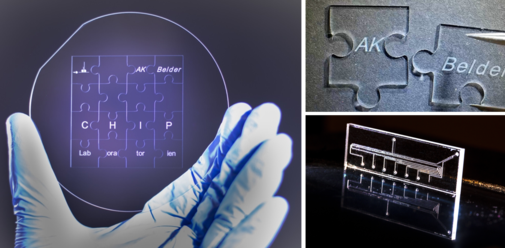
Aims of the project
The 3D laser structuring system is intended to expand the technical-instrumental infrastructure at the Leipzig academic site in the field of chip clean room process technology for microfluidic lab-on-chip systems. The novel process for micro-nano-laser structuring of glass and polymers will be used in all current research areas around the topic of complex, integrated micro-laboratories to overcome current technical limitations and to open up new research and development opportunities, e.g. for coordinated programs like the DFG research group "InChem". This includes research topics such as the development of optically fully transparent microcavity electrode arrays for tissue-based drug testing or the miniaturization and seamless integration of chemical flow synthesis, analytical separation techniques and high-performance detection methods in complex microlaboratories.
As part of an infrastructure measure funded by the German Research Foundation (DFG) and the Free State of Saxony, a laser spectroscopy microscope for studying chemical processes in chip-based microlaboratories was procured in 2019 and installed in the laboratory facilities of the Belder working group at the University of Leipzig. This system features a custom-built dual-microscope setup, multiple laser excitation sources including a tuneable TiSa laser, and a wide variety of options for sensitive detection. The versatility of the equipment setup now available enables simultaneous detection of chemical species at different locations on a chip by fluorescence and Raman spectroscopic methods, allowing significant advances in the research and development of miniaturized analytical and synthesis platforms to be realized.
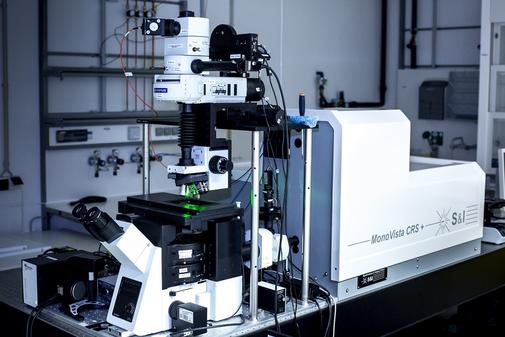
Aims of the project
In addition to the sensitive and selective analysis of diverse species, processes and materials will also be studied and visualized in more detail at the micrometer scale. The system opens up previously unavailable opportunities for research and development of miniaturized analytical systems of high complexity and functionality. Furthermore, the dual microscope will be used across faculties for research on a wide variety of microspectroscopy topics. In addition to intensive research activities, the system will also be used in advanced teaching in the master's degree program in chemistry, providing scientific staff and students with novel opportunities in spectroscopic analysis.
Vacancies
At the Institute of Analytical Chemistry of the University of Leipzig in the professorship Concentration Analytics we offer temporary positions within the framework of externally funded projects.
In addition to the supervision of doctoral theses, bachelor, advanced or master theses on various topics are offered in our working group.
